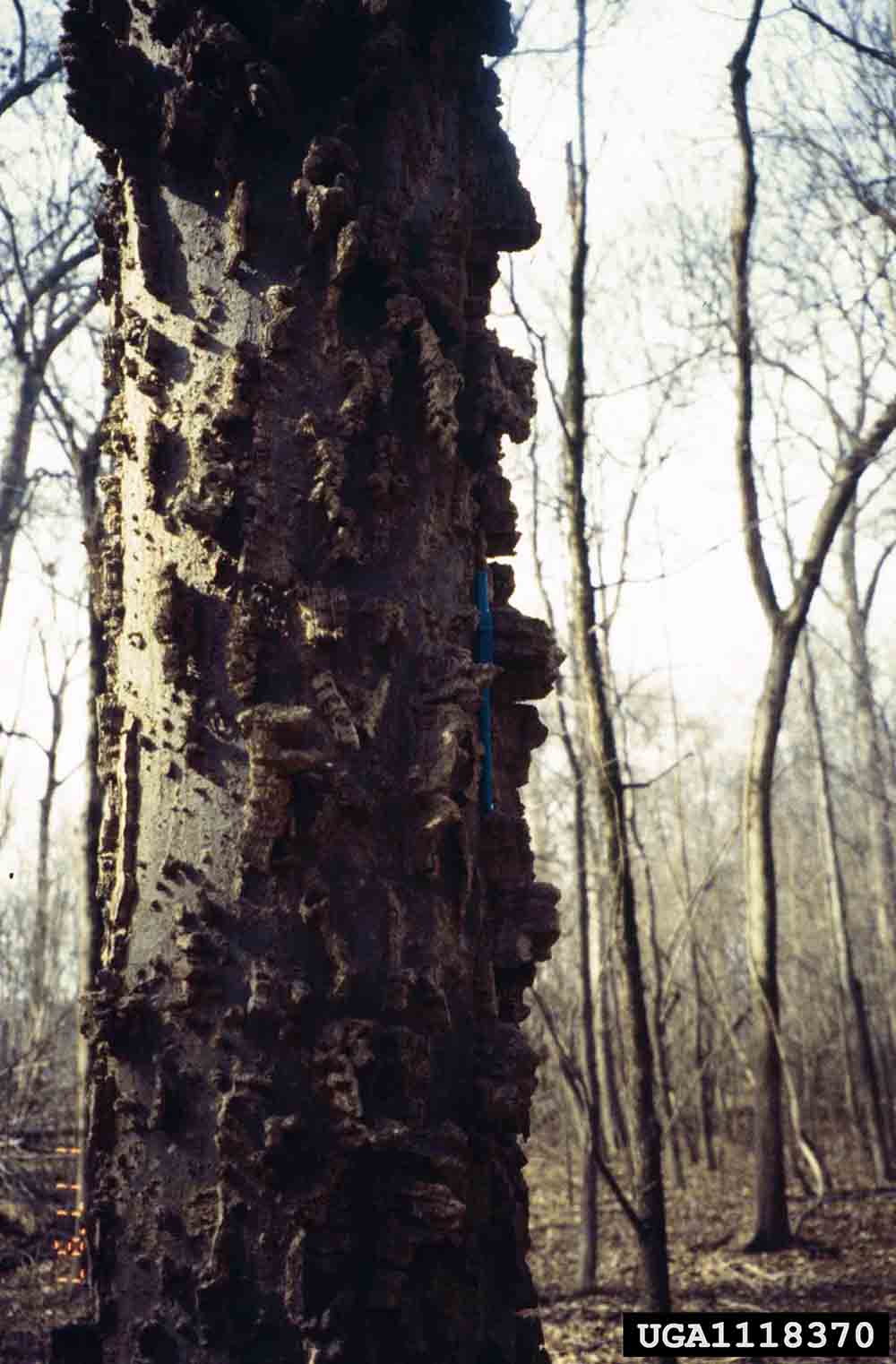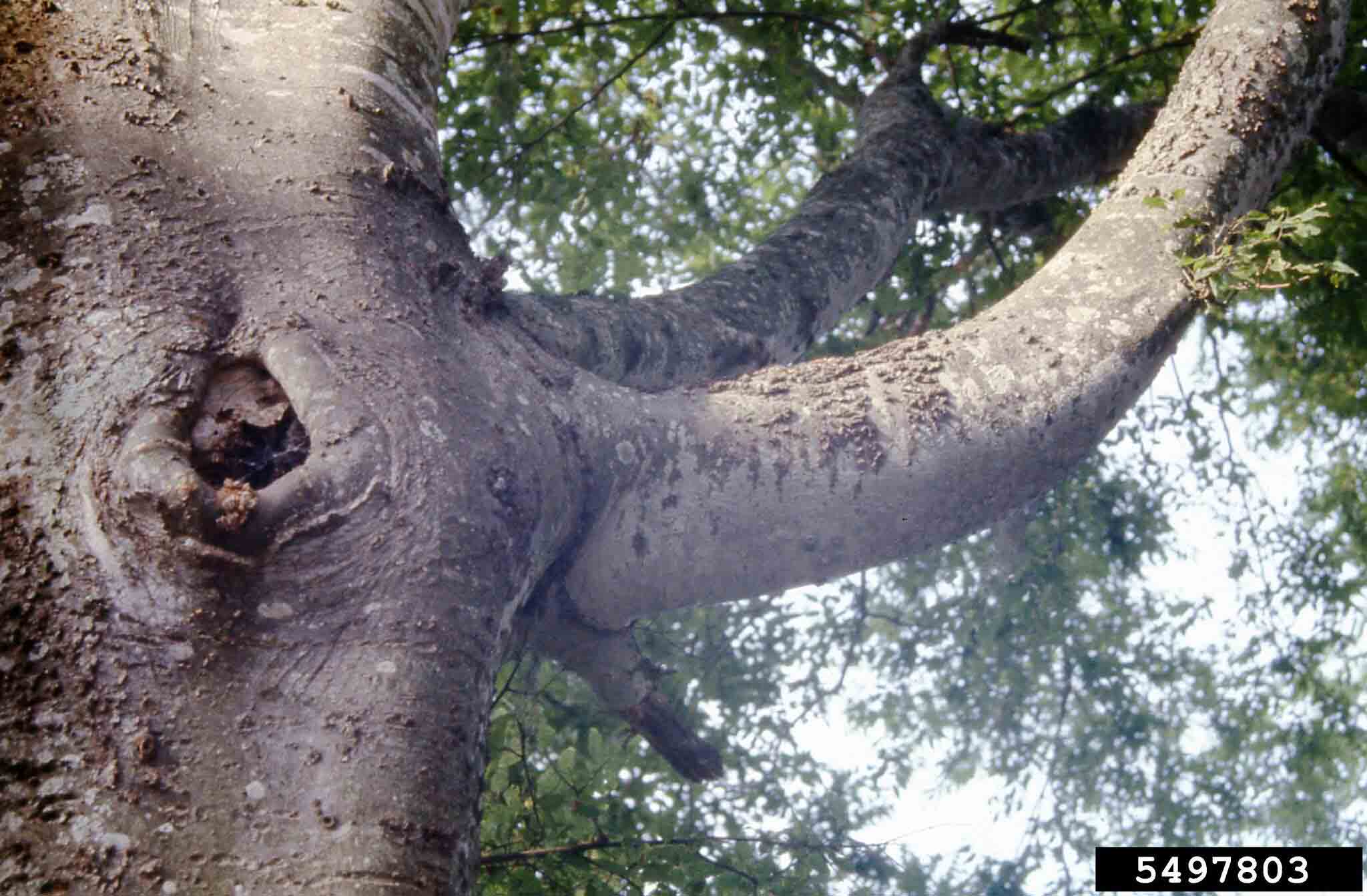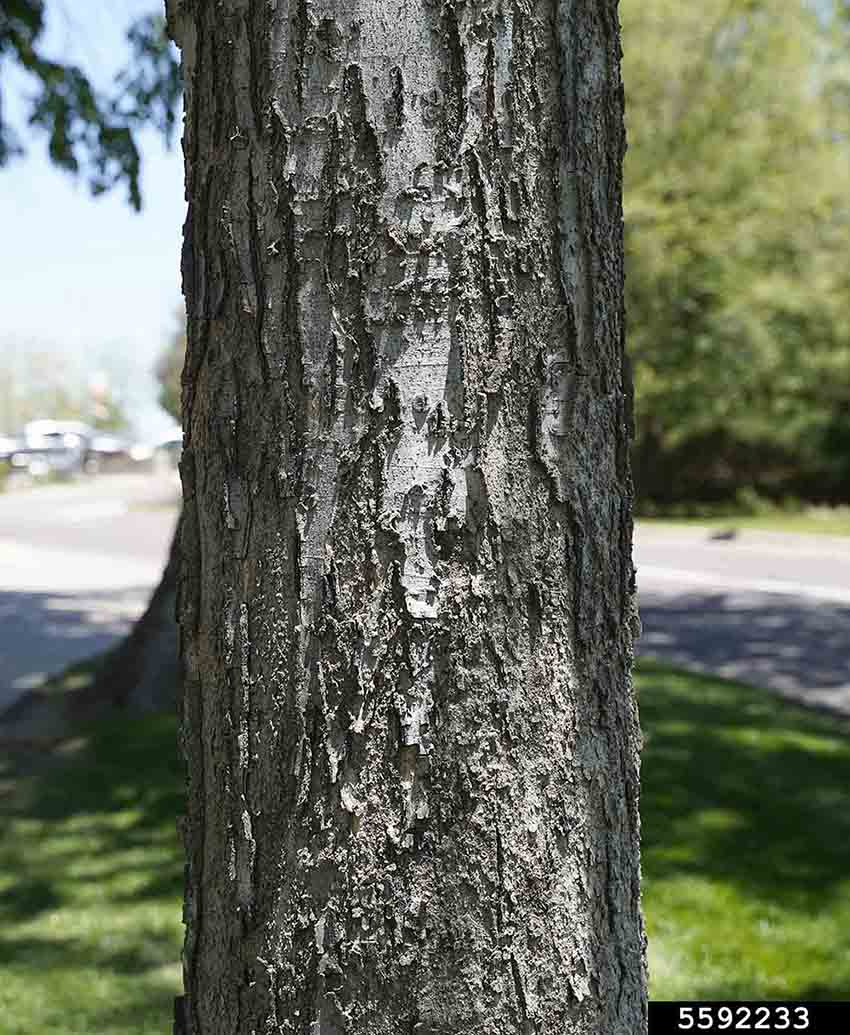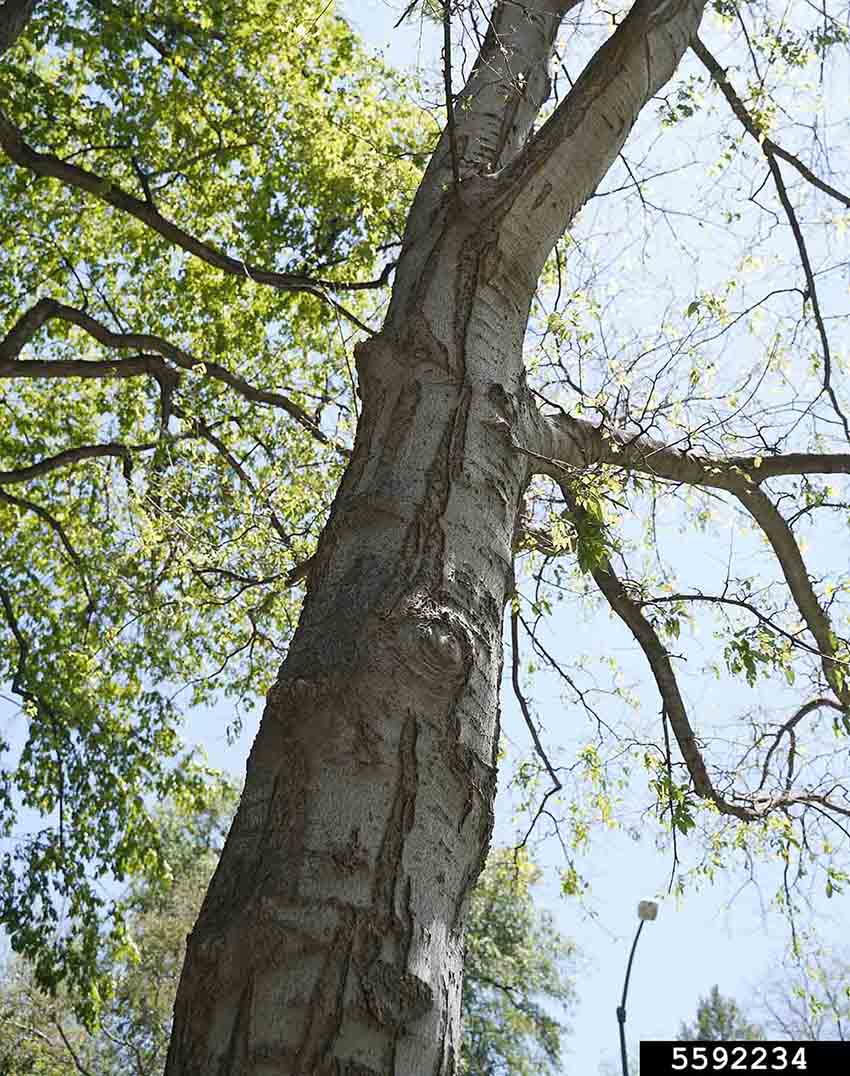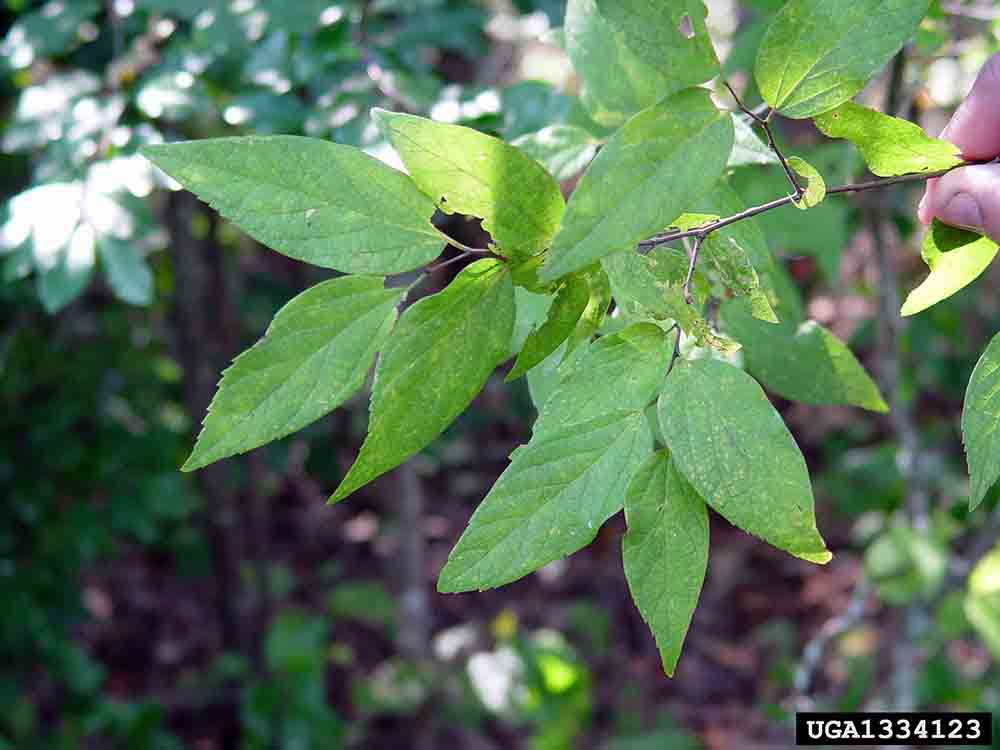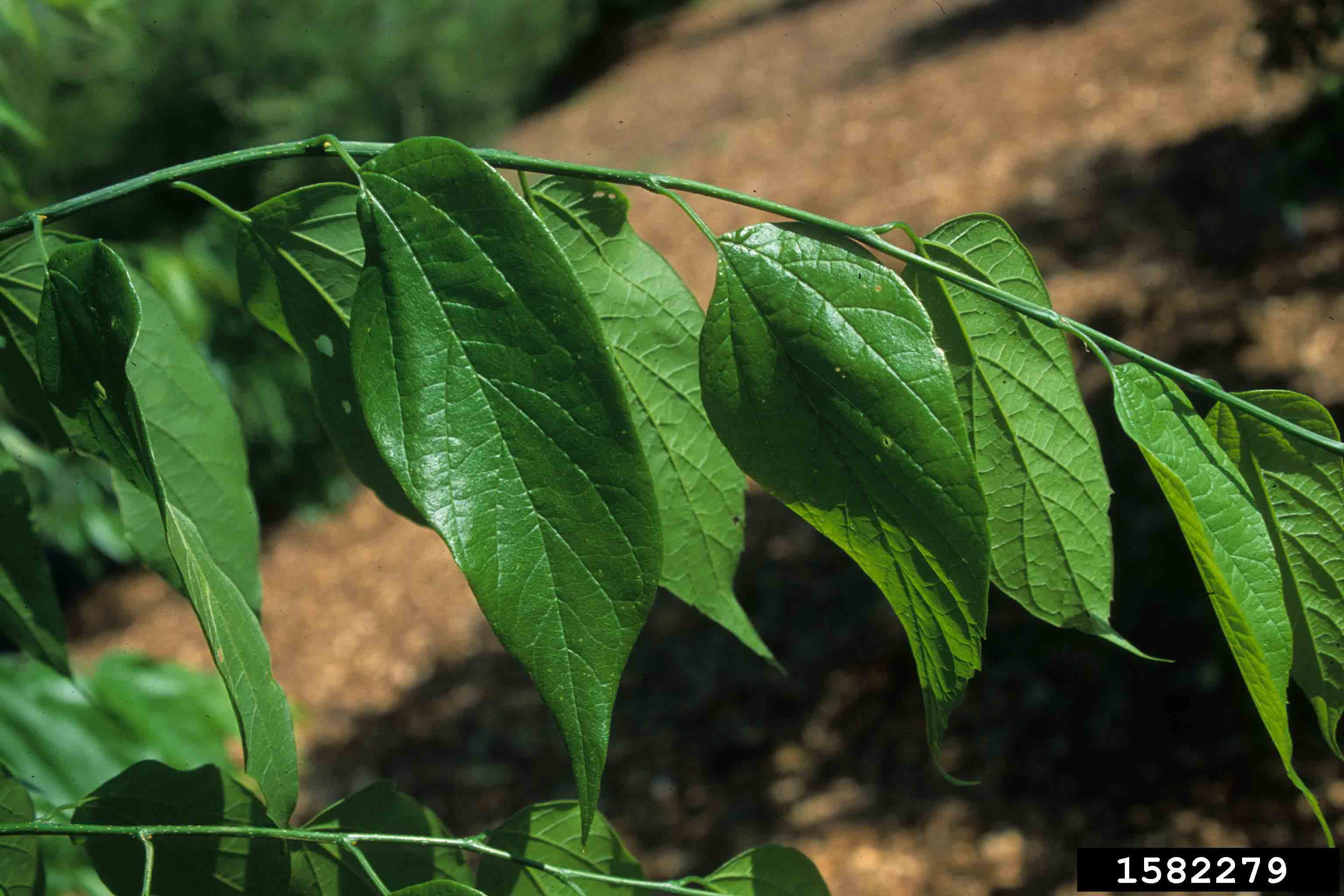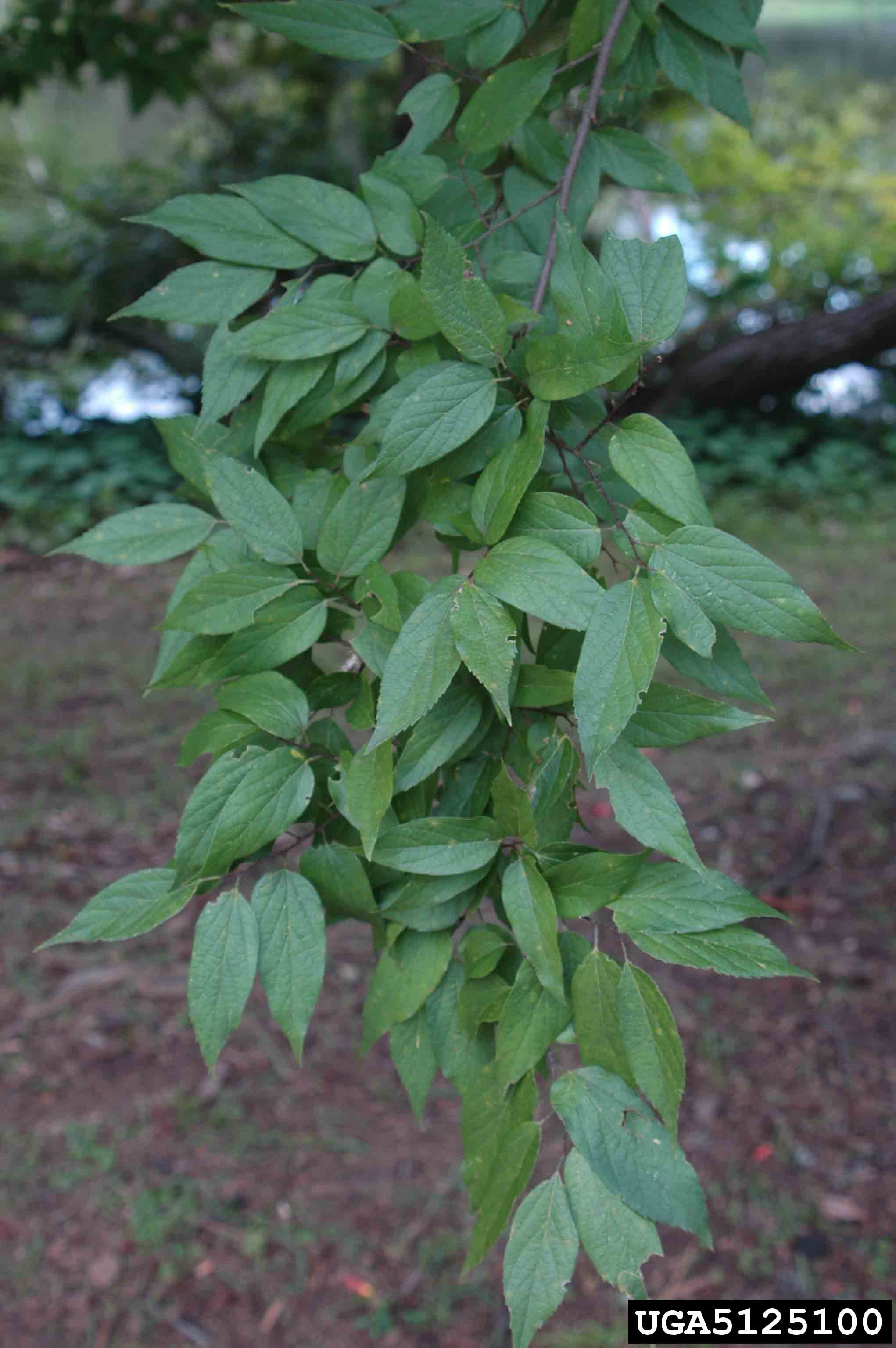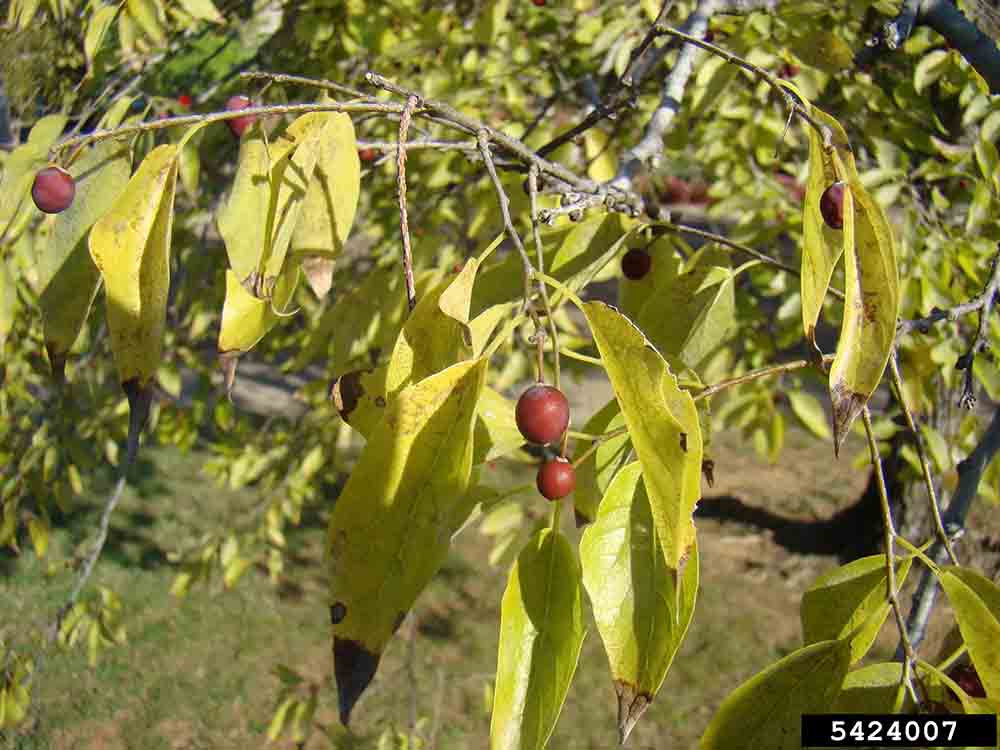Arkansas Tree Database
Sugarberry, Southern Hackberry, Sugar Hackberry
Sugarberry, Southern Hackberry, Sugar Hackberry
Scientific name:
Celtis Laevigata
Size:
50' tall by as wide, up to 80' tall
Leaves:
alternate, simple, 2"-4" long and narrower than hackberry, with surfaces smooth above and not hairy beneath, crown leaves with no teeth or only a few near the tip, juvenile leaves often toothed; light green
Flowers:
inconspicuous
Fruit:
1/4" diameter berry-like fruit (called a drupe), reddish orange to dark red, edible, sweet, loved by birds
Fall Interest:
yellow; deciduous
Culture:
sun to partial sun; moist to wet, rich soil; very adaptable
Disease/Insect:
Asian wooly hackberry aphid
Use:
shade tree, parking lot island, median, rarely planted (weak-wooded); useful to wildlife; crating, furniture
Cultivars:
Notes:
bark smooth and light gray developing warty projections with age; distinctive gray, warty branches; Native Americans pounded the fruits and used them to sweeten foods such as meats and corn cakes; native to Arkansas
Resources:
Click thumbnail to enlarge images
